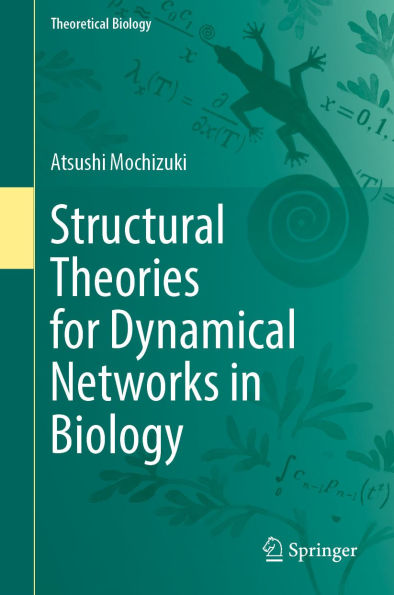This textbook provides an introduction to theoretical biology using specific topics and explains the main mathematical methods. The book also introduces the “structural theories” developed by the author and his colleagues as new theoretical methods. Structural theories are mathematical theories that determine key aspects of the behavior of dynamical systems from network information alone. The book details the practical applications of these methods across several biological network systems and shows that they are practically useful for analyzing the behaviors of biological systems.
The first half of the book focuses on the dynamics that arise from the regulation of biomolecular activity, such as gene expression and protein modification. The second half of the book approaches the understanding of the dynamics of complex systems composed of many biomolecules. Each chapter covers current and important topics in biological research, and its description of how biological phenomena are theoretically elucidated effectively conveys the importance and appeal of mathematical methods.
This book is not only a comprehensive textbook on theoretical biology, but also a study guide for learning mathematical methods. It also serves as a specialized reference for systematically learning new mathematical theories. The “Mathematical Methods” section at the end of each chapter offers a concise summary and facilitates efficient learning for readers, along with the exercises. Target readers of this book are from upper undergraduate students to senior researchers interested in the dynamics of complex network systems in biology. It appeals to both mathematical and experimental biologists, as well as chemists and physicists.
This textbook provides an introduction to theoretical biology using specific topics and explains the main mathematical methods. The book also introduces the “structural theories” developed by the author and his colleagues as new theoretical methods. Structural theories are mathematical theories that determine key aspects of the behavior of dynamical systems from network information alone. The book details the practical applications of these methods across several biological network systems and shows that they are practically useful for analyzing the behaviors of biological systems.
The first half of the book focuses on the dynamics that arise from the regulation of biomolecular activity, such as gene expression and protein modification. The second half of the book approaches the understanding of the dynamics of complex systems composed of many biomolecules. Each chapter covers current and important topics in biological research, and its description of how biological phenomena are theoretically elucidated effectively conveys the importance and appeal of mathematical methods.
This book is not only a comprehensive textbook on theoretical biology, but also a study guide for learning mathematical methods. It also serves as a specialized reference for systematically learning new mathematical theories. The “Mathematical Methods” section at the end of each chapter offers a concise summary and facilitates efficient learning for readers, along with the exercises. Target readers of this book are from upper undergraduate students to senior researchers interested in the dynamics of complex network systems in biology. It appeals to both mathematical and experimental biologists, as well as chemists and physicists.

Structural Theories for Dynamical Networks in Biology

Structural Theories for Dynamical Networks in Biology
Related collections and offers

Product Details
| ISBN-13: | 9789819660261 |
|---|---|
| Publisher: | Springer-Verlag New York, LLC |
| Publication date: | 06/21/2025 |
| Series: | Theoretical Biology |
| Sold by: | Barnes & Noble |
| Format: | eBook |
| File size: | 26 MB |
| Note: | This product may take a few minutes to download. |
